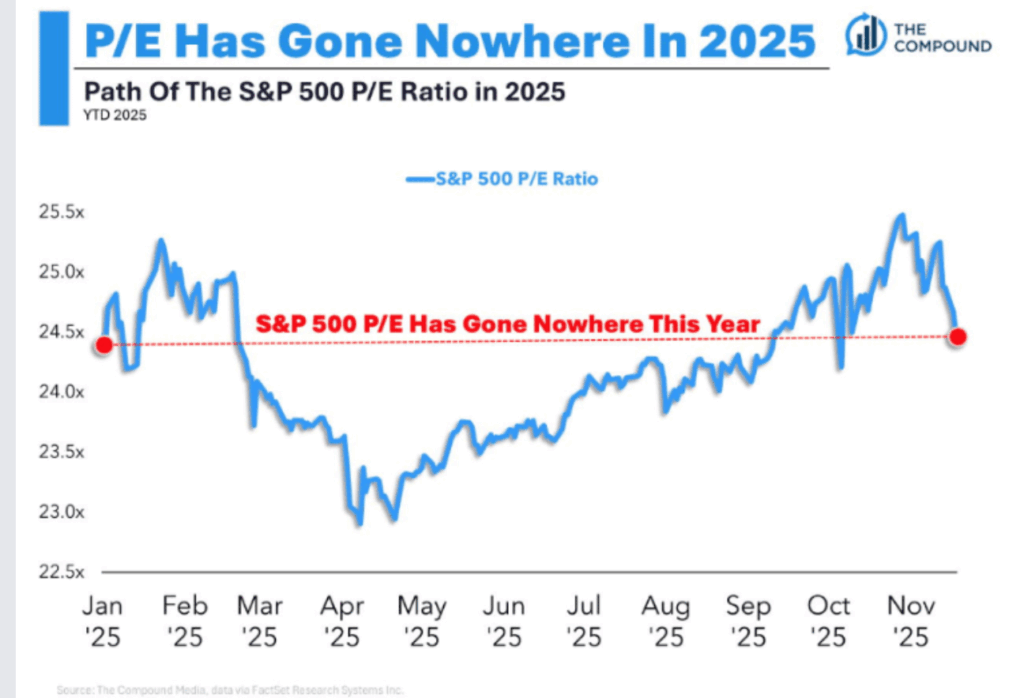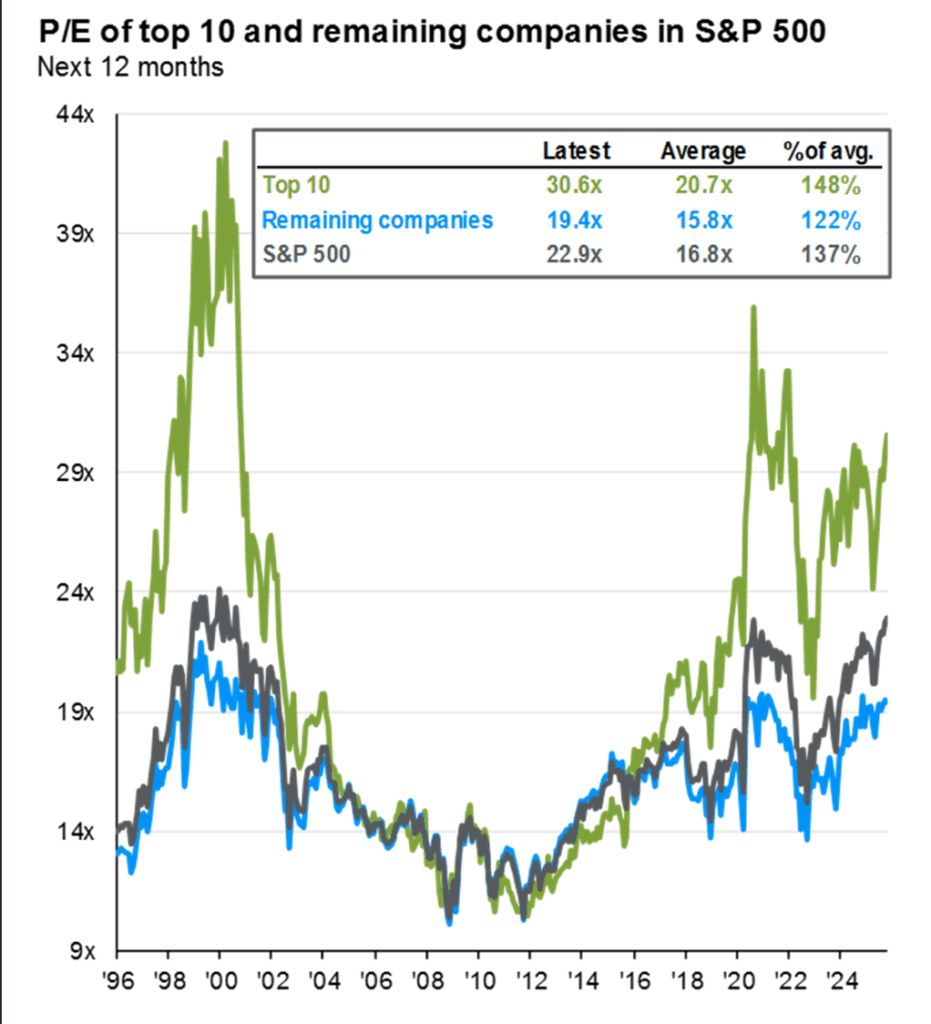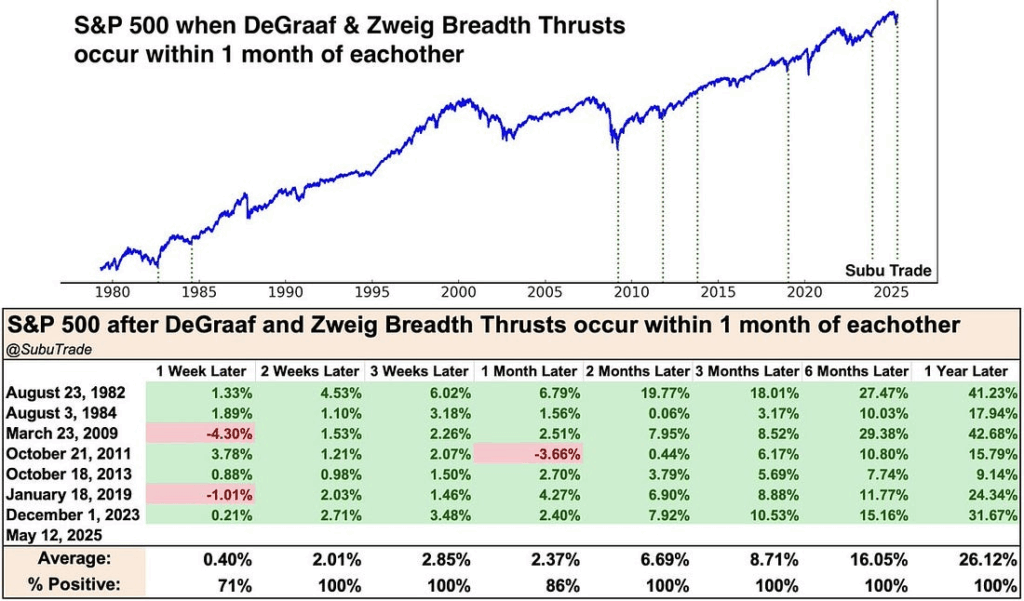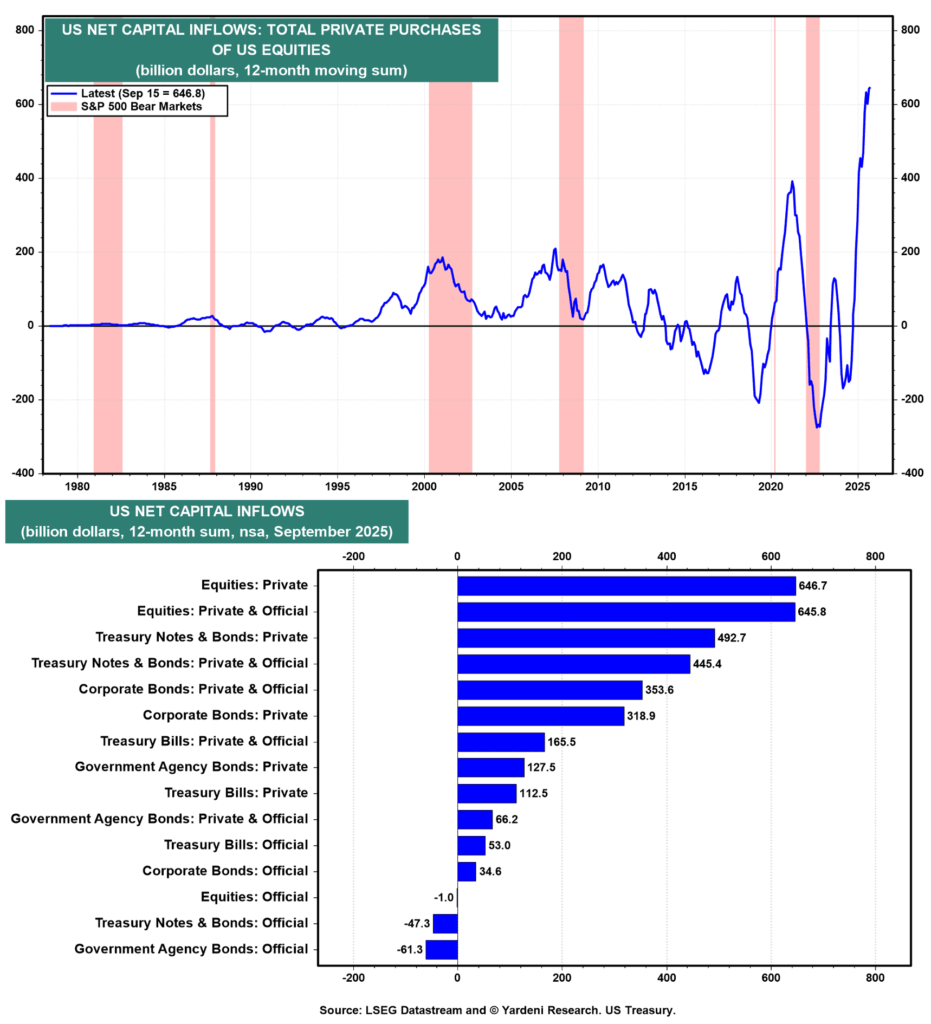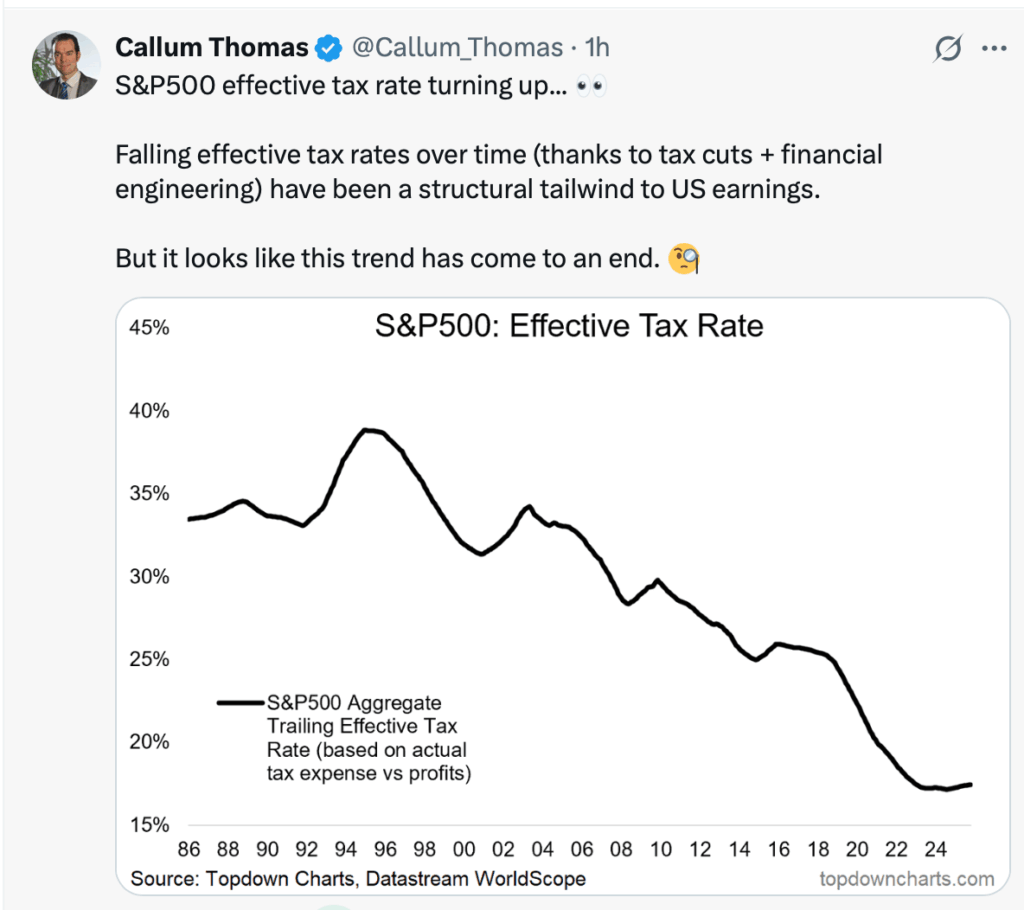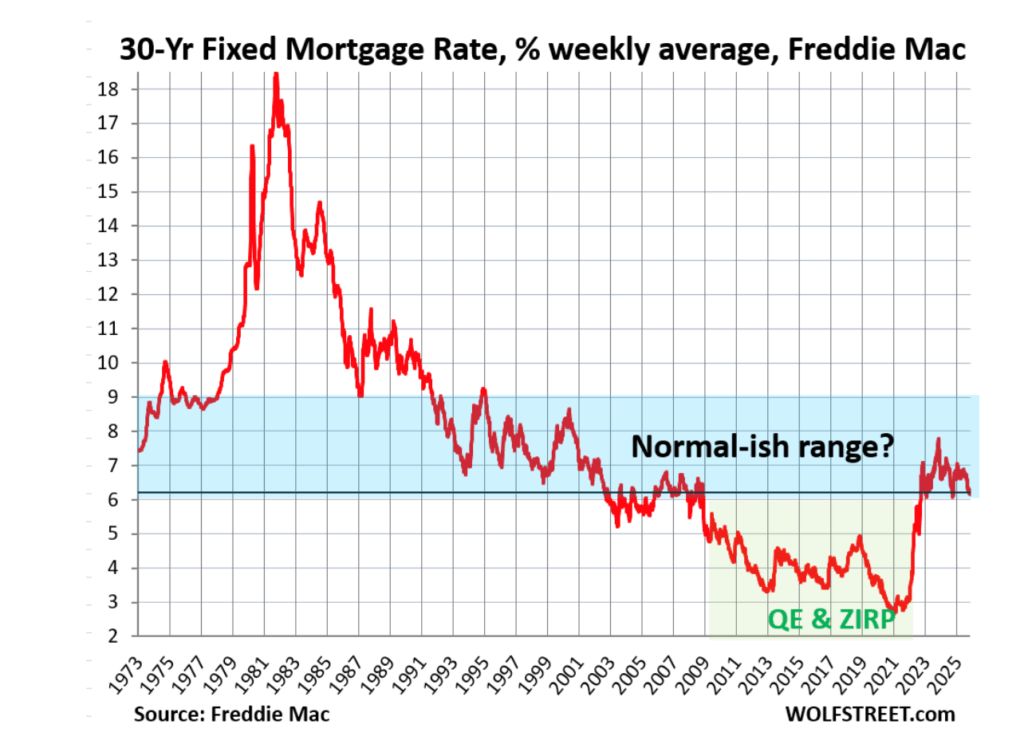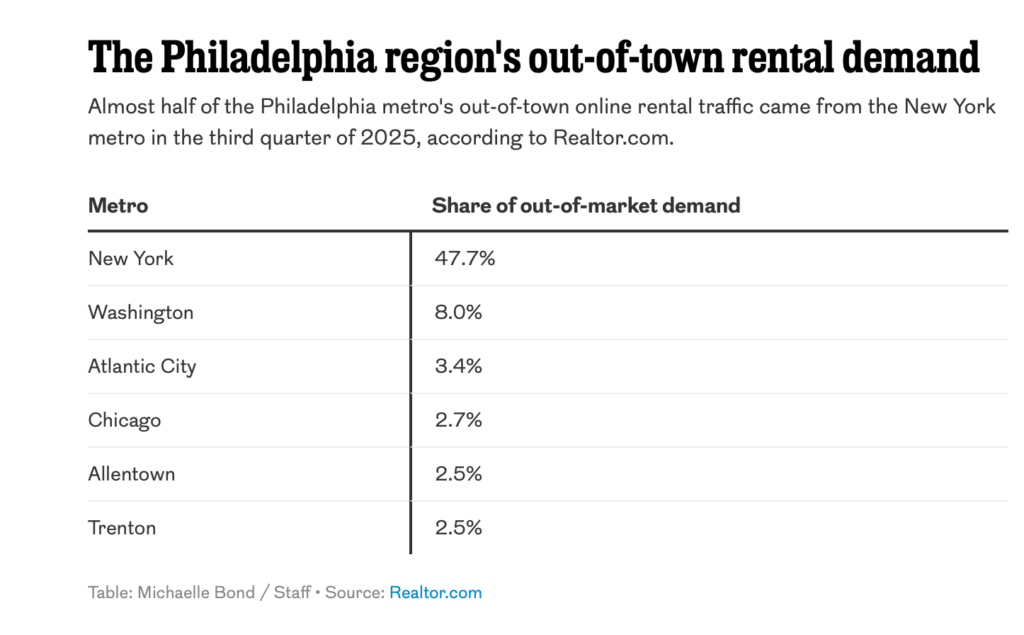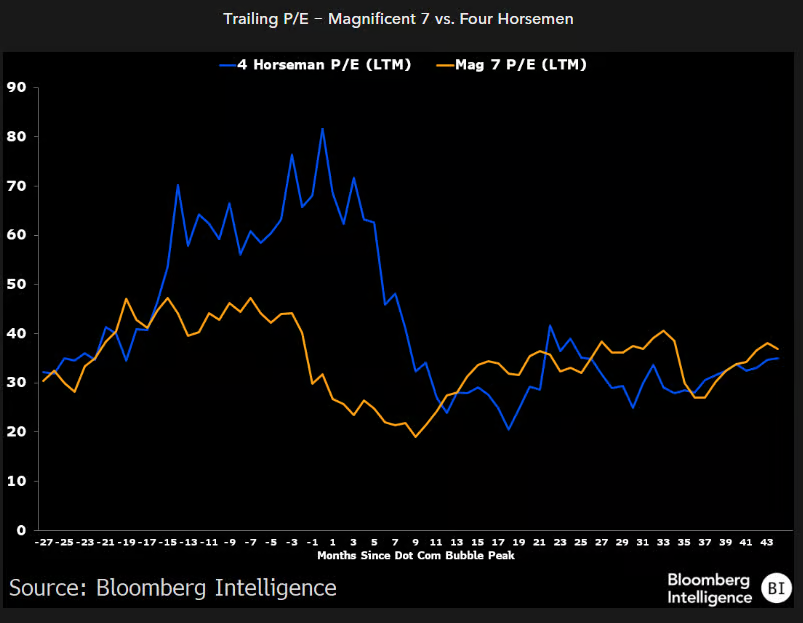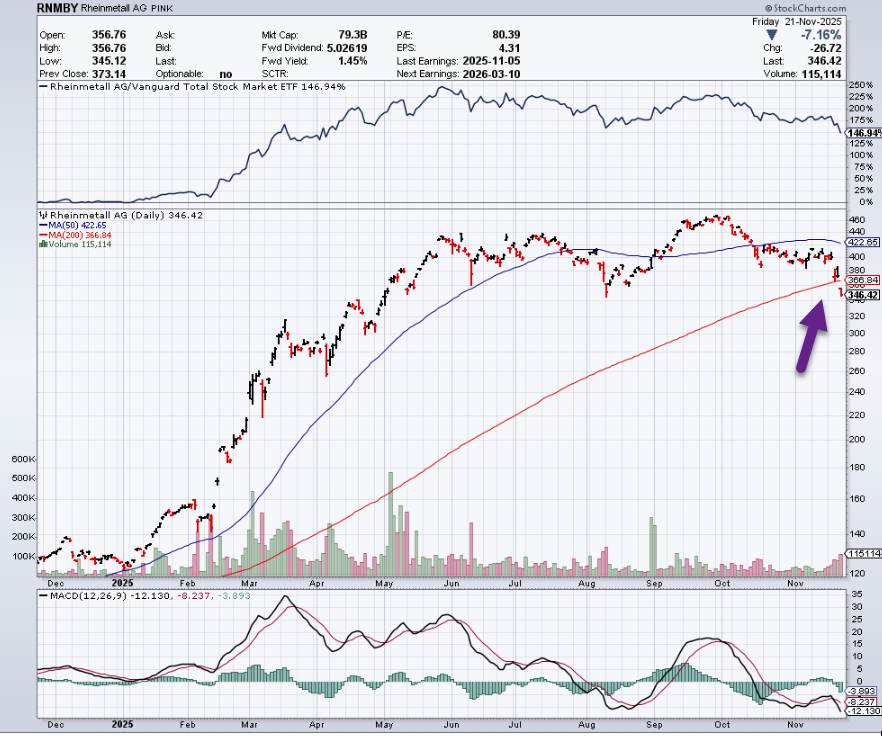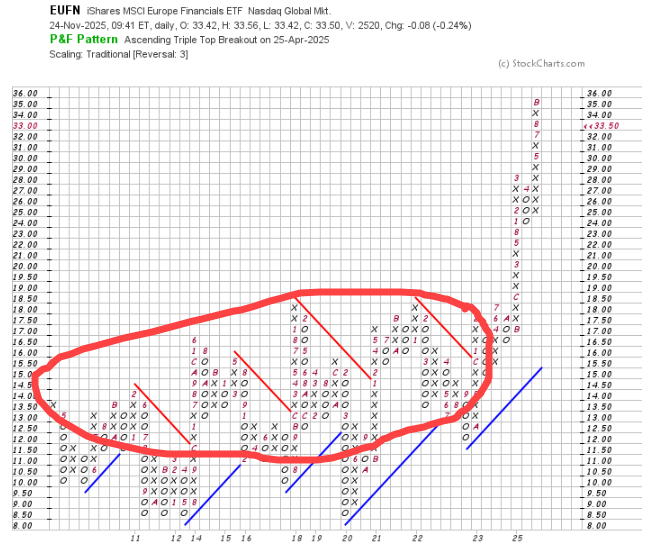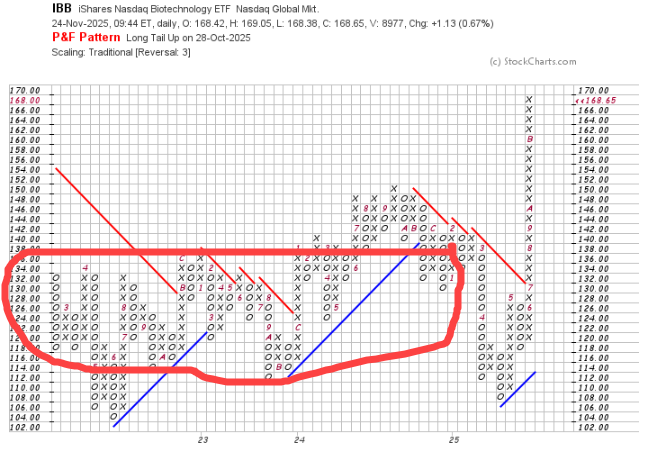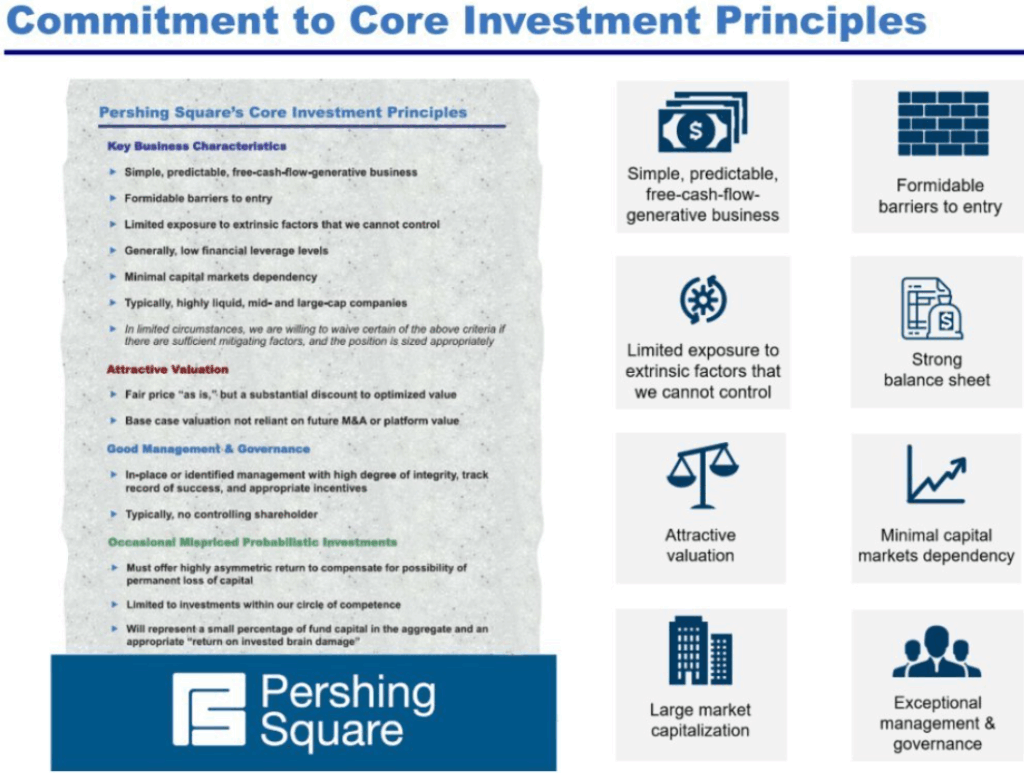1. Investor Allocation to Bonds Hit Previous Lows…Internet Bubble and GFC
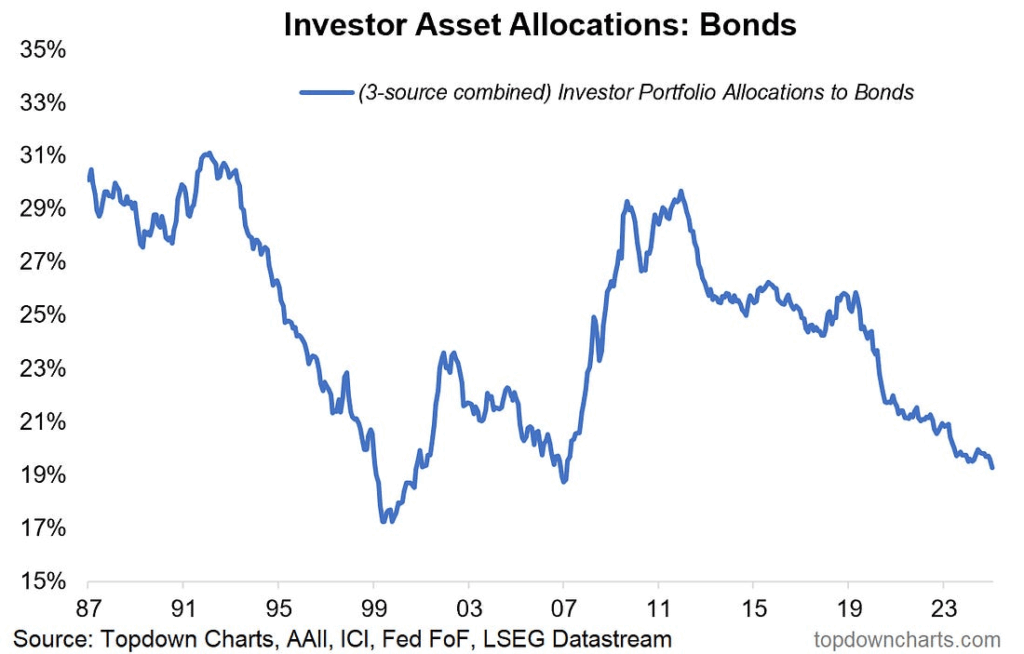
Topdown Charts
2. Investment Grade Corporate. Bonds AI Exposure-WSJ
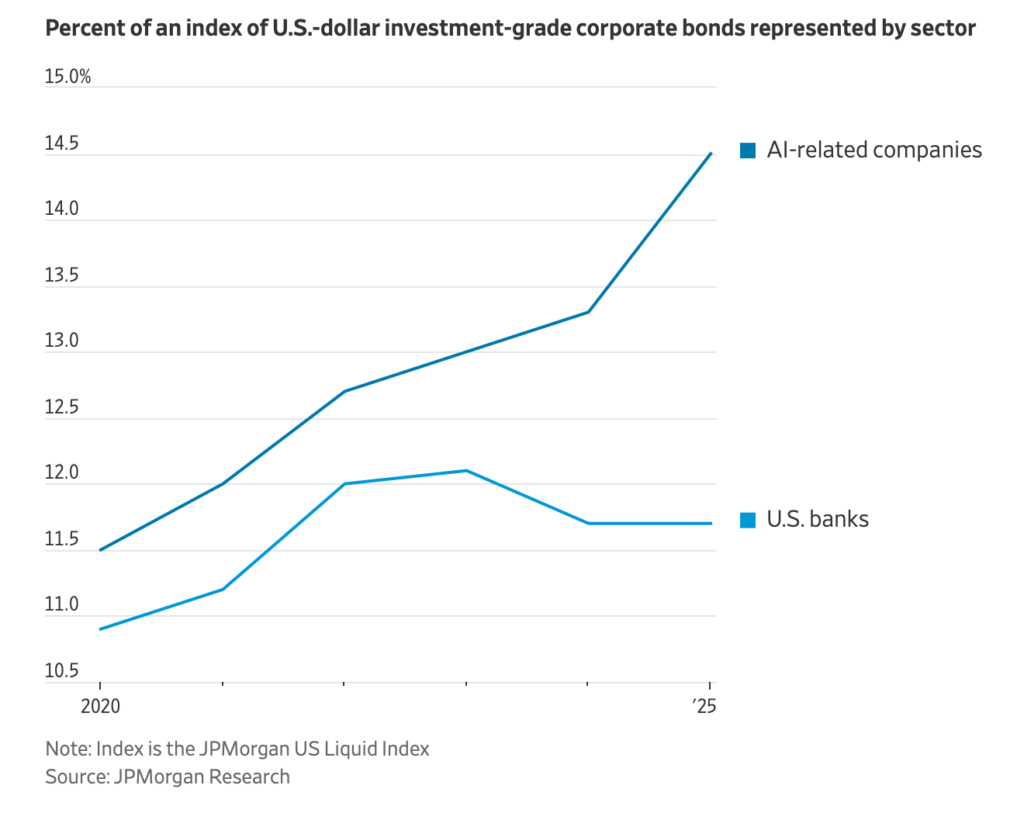
WSJ
3. Tether Gold Buying
Tether vs. gold. “Even the crypto world itself is warming to gold. As the chart shows, Tether has been steadily buying more of it over the last 18 months. It now owns about the same amount as Mexico or South Africa … If even DeFi is buying it, the case for gold’s bull market remaining intact is quite hard to refute.”

Daily Chartbook
4. Vanguard Allows Investors to Buy IBIT
Vanguard finally dips a toe into crypto waters as bitcoin’s bounce goes past $91,000
By Steve Goldstein and Joy Wiltermuth
Key Points
About This Summary
- Vanguard began allowing clients to purchase third-party crypto exchange-traded funds, including BlackRock’s iShares Bitcoin Trust ETF.
- Bitcoin increased approximately 6%, to over $91,000 on Tuesday, despite a 31% decline from its record high, reached in October.
- The average cost basis for U.S. spot bitcoin ETFs since January 2024 was around $84,000 — a level that could indicate further selling if breached.
Vanguard on Tuesday for the first time started letting clients buy crypto exchange-traded funds managed by third parties — just in time for a bounce in the beleaguered digital asset.
The news, first reported by Bloomberg, was confirmed by Vanguard on Tuesday. The company noted that its clients could buy products like BlackRock’s iShares Bitcoin Trust ETF
, other third-party cryptocurrency ETFs and mutual funds for purchase through its brokerage platform.
5. Healthcare Stocks Have Biggest One Month Outperformance in 25 Years
Bespoke Investment Group. So far this month, the Health Care sector is outperforming the broad S&P 500 by more than ten percentage points. As shown below, that hasn’t happened since November 2000!

Bespoke
6. CSCO Stock About to Get Back to Internet Bubble Highs 25 Years Ago
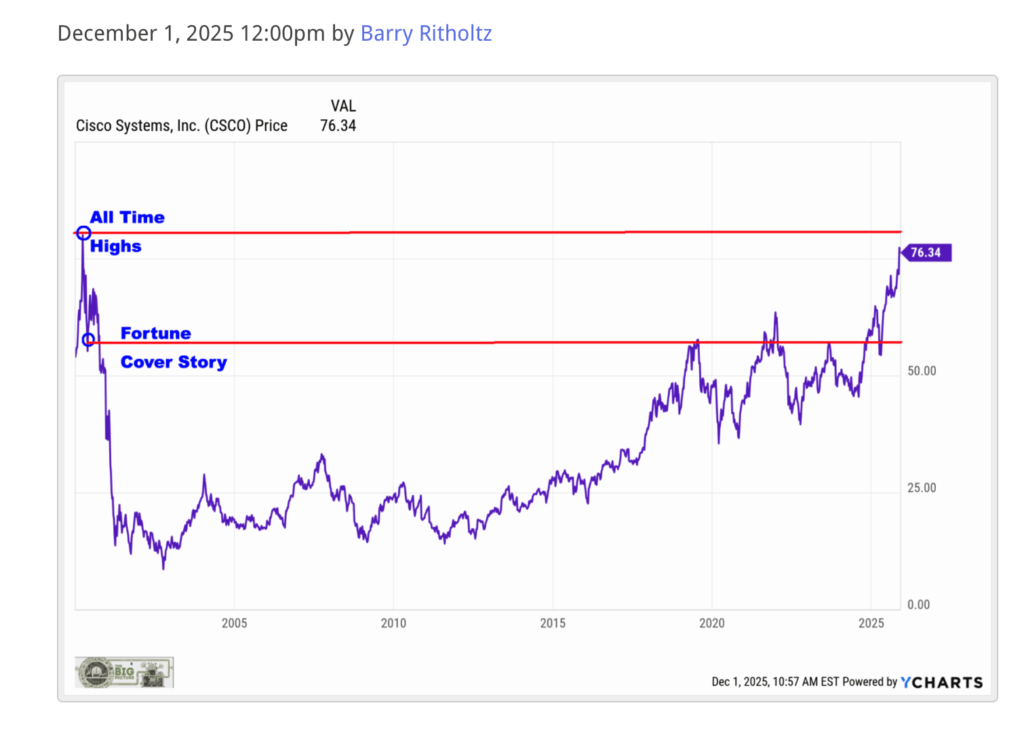
The Return of Cisco
7. Holiday E-Commerce Has Tripled in 10 Years

In 2015, just 17% of American online holiday shopping took place on smartphones — a share that’s expected to hit 57% this year, per Adobe estimates. Total online spending has surged more than 3x over the same period and now, with some shoppers turning to AI for product discovery and recommendations, that growth seems likely to continue.
Indeed, from November 1 through 28, AI-referred traffic to retail sites was up 805% from the same period last year. More than 4 in 10 consumers already use AI to shop, a survey from Mastercard found— led by 61% of Gen Z, who rely on it for deal-checking and filtering out bogus reviews. www.chartr.com
8. Ecommerce vs. Department Store
Jack Ablin Cresset Capital In-store traffic continued its long decline, though the drop was moderate. This year recorded a 3.6% year-over-year decline in Black Friday foot traffic according to RetailNext, while Sensormatic reported a 2.1% slide. These numbers represented an improvement relative to earlier weeks, suggesting that meaningful in-store demand persists, particularly in higher-quality malls and value-focused stores. Observations from multiple malls across the country described steady crowds, even if consumers were more cautious once inside.

Cresset
9. New York City Increasing Apartment Supply Thru Office Conversions

WSJ
10. Seth Godin Blog on Better Shopping this Year
Build a better alternative to Black Friday
About thirty years ago, Jerry Shereshewsky invented “Cyber Monday” as an alternative to Black Friday. The idea was that you’d wait until you got to work on Monday after the Thanksgiving break (where there was high speed internet and you wanted to avoid doing drudge work) to do your shopping from your desk. After all, who wants to get trampled at a big box store?
Of course, since then, the hype machine that is Black Friday has shifted its focus from mobs in the store to mobs online. And the media is still all in in promoting the orgy of consumption and fake deals that happens today.
We’re still going to shop for the holidays. A blog post probably isn’t going to change that. But perhaps we can counter the downward spiral of Amazon’s recommendations, fake reviews and search ads with some AI oomph of our own.
With Claude’s help I built a simple “project” that lets me automatically do powerful research and searches with no junk or distractions. Here’s a bit of what it gave me when I asked it for ‘healthy dog chews’:

If you have a claude.ai account, here’s how to do it. It takes about a minute to set it up. You’ll find that the searches are way slower than the instant overoptimized Amazon results, and the pause is worth it.
Open your Claude account on the web or in their app and look for PROJECTS on the left hand column. Until Claude taught me about this, I had no idea it existed.
Start a new project. Name it something fun and then hit Create Project to save it.

On the next page, it will ask you to “add instructions”. Hit the plus sign to the right…

Copy what’s below and you’re done. Now, every time you do a search with this project, you’ll find thoughtfully researched results. As a bonus, I’ve added a line that adds my affiliate code, which generates royalties for charity (this year, it’s buildon.org.) Feel free to delete that or substitute your own.
All you need to do is hit the + sign in the basic Claude user text entry box every time you want to use it. The first choice is “use a project”.

One other benefit: when it finds something great that’s not on Amazon, you’ll know it when you click through and it’s not there. Then you can go buy it somewhere else…
Okay, here’s the text to copy and paste:
You help people find products worth buying by cutting through Amazon’s ad-filled, fake-review-laden search results. When someone tells you what they’re looking for, do actual research and recommend 4-5 genuinely good options.
How to research:
Use web search for every query. Check multiple source types:
- Expert reviewers (Rtings.com, Consumer Reports, specialty publications)
- Specialty retailers and enthusiast shops
- Reddit and forum discussions (what do people say after 6 months?)
- Professional recommendations (vets for pet products, audiophiles for audio, etc.)
What to deliver:
Start with 2-3 sentences of context: what matters in this category, common mistakes to avoid, or pitfalls.
Then give 4-5 picks. For each:
- A label (Best Overall, Best Value, Best for Power Users, etc.)
- Who it’s ideal for (one phrase)
- Why it wins (3-4 specific reasons from your research)
- Tradeoffs (every product has them—be honest)
- An Amazon search link with this format:
https://www.amazon.com/s?k=[search+terms]&tag=permissionmarket-20
Tone:
Be opinionated. If something is the clear winner, say so. If a category has safety issues or scams, warn them. You’re a knowledgeable friend who actually did the homework—not a hedging AI or a generic listicle.
Don’t recommend anything you couldn’t verify across multiple sources. If you can’t research a category well, say so.
Have fun!
https://seths.blog/2025/11/build-a-better-alternative-to-black-friday/
